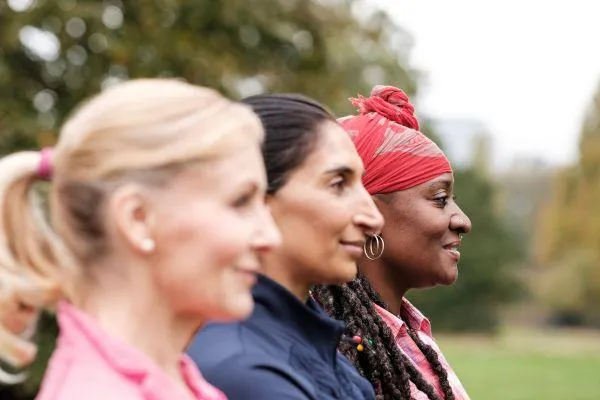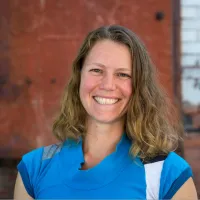New Blog Entry Every Thursday
Discover and Delight in How the 3 Step Reciprocity Cycle Comes to Life Each Week!

Community Based Social Marketing
“Social marketers view their audience as decision-makers with choices, rather than students to be educated, or incorrigibles to be regulated." -- Nancy R Lee
First there was Theory of Planned Behavior.
Then there was "Early Majority."
Now?
Community Based Social Marketing.
Buckle up!
Acknowledge Earth Is Our Home
Community Based Social Marketing is a 5 step process. And step one does indeed fit well with the 3 Step Reciprocity Cycle.
Select Behaviors.
This is really critical. We need a target. And though we've looked at "Acknowledge Earth as Your Home" from the lens of attitude and meaning & purpose...
It can also be a target.
The challenge is that it's not as specific as CBSM would like. They would ask for high impact, high probability, low penetration behavior. Yep, for real.
Translation?
A lotta bang for the buck. With a very good chance people will do it. But for some reason it just hasn't happened yet.
Designated Driver is an excellent example. The concept was crafted by John Hopkins as a way that would very effectively curb drunk driving accidents and death. Seems quite likely people would do it. And yet, it wasn't really a thing -- because it didn't have a name.
Well the center worked with several tv networks to change that. The most notable? Cheers. "You wanna go where everybody knows your name."
On the other hand "Acknowledge Earth as Your Home" is pretty vague. That's the challenge -- but also an opportunity for story.
For example, in "How on Earth?" each episode centers on a concrete Everyman question.
In fact, I find that I have to remind people of this.
As if on repeat, "It revolves around the protagonist's question."
Discover Your Earth Archetype
Then we get to step 2 in both CBSM and 3 Step Reciprocity Cyle. Is it a match?
Identify Barriers and Benefits.
Well, according to people like Ayana Elizabeth Johnson and Pattie Gonia, figuring out "Who am I or What can I do?" in the context of climate action is really hard.
Our skills, resources, networks all seem too small compared to the giant polluters, financial institutions, political juggernauts, and more. Not to mention our own anxiety, coolness, loneliness, etc.
And the creator of CBSM (Dr. Doug McKenzie Mohr) makes a good point.
Too often well meaning people think the environmental benefit will be the same as the personal benefit.
And though there is some strong things to explore about why those may not align, it's the truth of where we are at in the moment.
We can reevaluate when more people truly embrace "Earth is our Home."
Plus, there is something to say that just like the 5 Earth Archetypes bring different things to the table, they may each have their own desired benefits to take into account.
Work Together in Community
Then we get to Step 3 for both frameworks. Here in the 3 Step Reciprocity Cycle, it's all about community -- similar with CBSM.
While the former focuses on cooperation and biodiversity, the later focuses on very specific strategies that rely on external loci of control.
Commitments & Pledges
Social Norms
Prompts & Reminders
Incentives
Feedback & visibility
Now if you're like me, something about this list makes you bristle. It seems to simple, basic, gamified. Lacks nuance. But Doug knows his audience of city planners, NGOs, marketers, and a whole lotta other people that have stuff to do!
So I asked ChatGPT to "prove"
Why These Work (and Why They’re Enough)
Commitments & Pledges
Rooted in consistency theory (Cialdini, 1984): people want to align their actions with past statements, especially when public. Even small commitments (signing a pledge, saying “yes” out loud) can increase follow-through.Social Norms
Humans are deeply social learners. Bandura’s social learning theory and Asch’s conformity experiments show we mirror the behaviors of peers more than we obey abstract authority. Norms make actions feel like what “people like me” do.Prompts & Reminders
Habits often fail not from lack of motivation, but because the cue is missing. Research on habit formation shows that well-timed prompts (stickers on bins, text reminders) dramatically increase uptake of desired behaviors.Incentives
Skinner’s work on reinforcement + behavioral economics shows that rewards, if small and well-designed, can tip someone into trying something new. The key is not to bribe but to lower initial resistance.Feedback & Visibility
Rooted in self-efficacy theory (Bandura): seeing progress builds confidence. Feedback loops (like showing energy saved on a bill) reinforce that “my actions matter,” while visibility creates contagious modeling.
That's a whole lotta community.
We're Not Done Yet
Community Based Social Marketing still has 2 more steps -- and they are certainly ones I'm in the midst of right now.
Step 4: Pilot. So far, what we have is conjecture. It may be very well informed, but still it's a big ol' guess.
Will the plan actually create change?
So like any good Molecule would tell you "Test!" And measure the impact.
Then if the measurements are good...
Step 5 Implement & Scale
I can't wait until we get here with Earth Archetypes and How on Earth?
Support the Blog
Let's tell stories that help people imagine what's possible.
© 2024 AMPLIFY CURIOSITY, LLC | ALL RIGHTS RESERVED TERMS & CONDITIONS | PRIVACY POLICY

